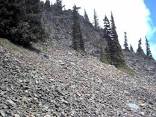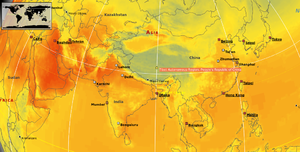The Bird of Happiness
Concept Map
Error: Mind Map file The Bird of Happiness.mm not found
Additional Information
Life and culture in Tibet
- Tibetan landscape
- Climate in Tibet
- Images of Tibetan Life
- Tibetan People
- Barley and barley bread
- Tibet Oral History
- Tibetan food
- Religion in Tibet
- Images for Tibetan Mythological creatures
- For a sample of Tibetan music click here.
Compilations of Tibetan folk tales
What is this story about
- About a Tibetan village where people where poor and suffering (discuss reasons and the role of natural resources in human life)
- A boy's search to help his village
- About the boy's virtues, ethics and how that helps the village
- We are introduced to the customs in the village
- Names and characters in the Tibetan mythology
Language used in the story
- Translated text (talk about the Sino Tibetan family of languages)
- Who is the translator?
- Some vocabulary specific to mountains
- Some vocabulary which is a slang is also used (for grandfather, etc)
- Written in the past tense
- Third person narrative
Teaching Outlines
Idea 1 - Life, climate and culture of Tibet
- Context of the story -Where is Tibet?
- Life conditions
- Tibetan customs and practices
Activity 1
- Give the students a set of pictures and can they tell a story
- See the following link for how you can tell a story from photographs.
Idea 2 - Discussing the story
- The key actors
- The key ideas
- What belief systems
Activity 1
- Students can make a mind map of what they picked up from the story
- Share the mind maps and discuss
- Focus on words used, understanding of vocabulary
- Discuss multiple interpretations
Activity 2
- Make a series of pictures and role play and tell the story
- Reflect on the belief systems shared
- Sections of the stories can also be given to students for rewriting/ interpretation
Activity 3 Telling a story from images
- Give the series of images of a scree
- Ask students to write a story
- Using images of scree to write a picture book
| For a sample of a story using pictures of a scree, click here.
For a sample of a story using pictures of a scree, click here.
Activity 4 Making audio narrations
- Extend activity 2 by adding voice
- If you are interested, you can add music also
Activity 5 - Text comprehension worksheet
Please click here for comprehension and grammar activities.
Activity 6 - Build vocabulary using Kanagram
- Use Kanagram tool to build word lists and play games.
Activity 7 - Speak Well
Expressing gratitude
Idea 4 - Folk Tales and how they are organized
- Comparison with other folk tales locally
Activity 1
- Show other nature cultures/ mountain cultures stories and make a comparison of the ideas
- Race of the rivers is a story from Meghalaya about how a plain got its river. Compare ideas
- Native American folklore
Activity 2
- Translate one of the Kannada stories into English with images
Click here for a Kannada story.
